Document continue… from SAP Service Configurations In SAP MM – Part 1
As we have already discuss about Service Master Configuration on previous document, now we are going to next configurations.
Service Document Configuration
Service documents are used during the service process at different stages Like Purchase Order, Service Entry Sheet, invoice varification.
Purchase order is used as a instruction document to vendor or service provider to perform service with all terms and conditions.
Service Entry Sheet is used to confirm the service which is provided by the service vendor or provider.
And the invoice verification used for to confirm the invoice raised by the service provider with reference to the given purchase order.
Step 1 : Service Purchase Order Configuration
A purchase order is a legal document for service provider/vendor to record individual purchase with all terms and conditions. Its also provide to vendor with the reference document link to goods receipt and invoice verification.
Purchase Order has many types of Item category.
Like Standard, subcontracting, Stock transfer, Consignment, service etc etc….
We have to go with Service, which is on item category as D.
Number range :
We have to assign a number range to each Service Purchase order.. This a unique number for each order.
We can use existing number or we can create a new number range to differentiate service Purchase order.
We can use both external and internal number range for service purchase order.
New number range creation as follows:
Configuration Path = SPRO-IMG-Materials Management-Purchasing-Purchase Order-Define Number Ranges
Here is the existing number range, You can create new number range from also.
also.
Document Type
We can use existing document type for service PO, or we can also create our won document type for service purchase order.
Document type control these following areas:
Item Intervals
External and internal Number range
Field selection
Item category.
Configuration Path = Configuration Path = SPRO-IMG-Materials Management-Purchasing-Purchase Order-Define Document Types
Here I have created Create a Z document type and assign all control areas like item intervals number range (assign the new, if you have created), field selection (You can use FOF, which is provided by SAP or you can create your own by coping existing).
You can restrict to use only item category D for this document type. Just select the document type, the double click “Allow Item Category” (in left side)
Here I have allowed only item category D.
Purchase Order is ready to use for service entry.
Step 2 : Service Entry Sheet Configuration
The Service Actually performed (which have been done already) by a service vendor are recorded in Service Entry Sheet with reference to a PO.
The Invoice of services can be entered only when the service has been accepted.
After service acceptance the value will be automatically updated in specified G/L accounts.
We have assign a unique number for each service entry sheet. For that we need a number range for service entry sheet.
Number Range
T-code OMH9
Configuration path = SPRO-IMG-Materials Management-External Services Management-Number Ranges-Define Number Ranges for Service Entry Sheet
Click on edit intervals.
Here you can create your own number range and maintain it as external or internal, or you can use existing one.
As similar you have to maintain number range for Service package
Configuration path = Configuration path = SPRO-IMG-Materials Management-External Services Management-Number Ranges-Define Internal Number Range for Service Specifications
Here you can create your own number range and maintain it as external or internal, or you can use existing one.
Number Range Assignment with service entry sheet.
Configuration Path = Configuration path = SPRO-IMG-Materials Management-External Services Management-Number Ranges-Assign Number Ranges
Maintain the number ranges here for service package and service entry sheet.
Now our service document configuration has been done.
SERVICE RELEASE STRATEGY
There are a document already exists for service release strategy.
Please go though this document for service release strategy.
http://wiki.scn.sap.com/wiki/display/ERPSCM/MM-SRV+Release+Strategy+for+Service+Entry+Sheets
SERVICE PRICING PROCEDURE
When we enter Service PO, the pricing procedure is fetched from PO pricing procedure, which has been describe on this blog
Pricing procedure Details and Steps in SAP MM
Buy whenever we have entered in service entry sheet in ML81N, it fetch a pricing procedure. It’s configuration done via service pricing procedure.
As we have all idea about pricing procedure. It’s also little bit same as other pricing procedure.
We have to maintain Condition types, Access Sequence, Condition Table, Calculation Schema, Schema assignment.
We know about all these above details.
Configuration
Here we have to maintain Condition table, Access Sequence, Condition Type, Calculation Schema and Schema assignment.
Step 1 : Maintain Condition Table
As SAP has maintained already maximum condition tables. Generally we not need to maintain new condition table, but If your requirement is different and you need to create new condition table, then follow the process:
T-code M/13
Configuration path = SPRO-IMG-MM-External Services Management-Maintain Conditions for Services-Create Condition Table (Service)
Here you have to enter new condition table and also you can copy existing condition table.
Double click on the field name which you want to use on this condition table.
When you double click on the field the field will come to left side and the field colour will be blue.
Now save your data.
Step 2 : Maintain Access Sequence
T-code M/11
Configuration Path = SPRO-IMG-MM-External Services Management-Maintain Conditions for Services-Access: Maintain (Price Services)
There are some maintained access sequence here, You can maintain the new condition table in existing access sequence or you can create your own.
Just Click on new entries and create your access sequence. Then maintain the condition table on your newly created access sequence.
Step 3 : Maintain Condition Type
T-code M/10
Configuration path = SPRO-IMG-MM-External Services Management-Maintain Conditions for Services-Conditions: Condition Types
The condition type PRS and PRSX is for gross price.
PRS is automatic price determination and PRSX is manual price determination. You can use this, or you can create your own condition types.
maintain the access sequence as per your requirement.
For more understanding I refer this link SAP Online Help
Also maintain the discount, surcharges, etc etc as per your requirement.
Step 4 : Maintain Schema
T-code M/12
Configuration path = SPRO-IMG-MM-External Services Management-Maintain Conditions for Services-Conditions-Schema for Services
As you can see, there are some calculation schema has already created by sap. You can use the existing one or create your own.
Just click on New entries
As we know about how the calculation schema is calculating, against that calculation you have to enter the condition types and other values.
Maintain the condition types as per your requirement.
Step 5 : Schema Assignment per Document type
In this step we can assign the calculation schema to the document type for purchase document for service entry sheet.
T-code M/16
Configuration path = SPRO-IMG-MM-External Services Management-Maintain Conditions for Services-Conditions-Variable Calculation Schema for Services
Here you can maintain your own calculation schema for purchasing document type.
First column for Purchase document category
You have to choose like RFQ, PO, PR, Contract.
Then choose your Document type as per combination of document category.
Then enter your calculation schema.
Now our pricing procedure for service is done.
Test
Now we are going to create a service entry sheet.
We can see our pricing procedure is flowing like as our calculation schema.

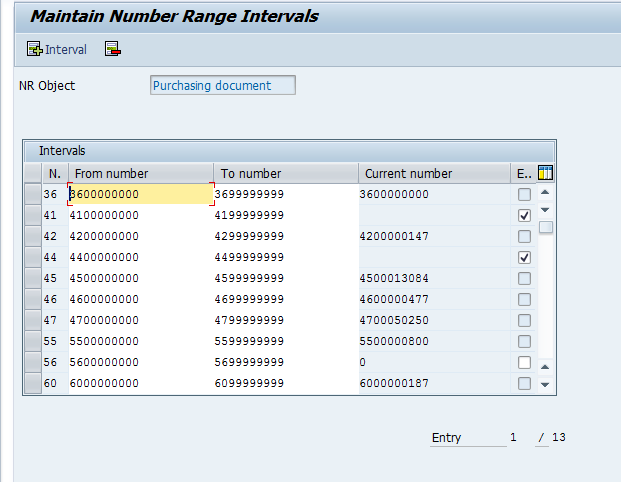
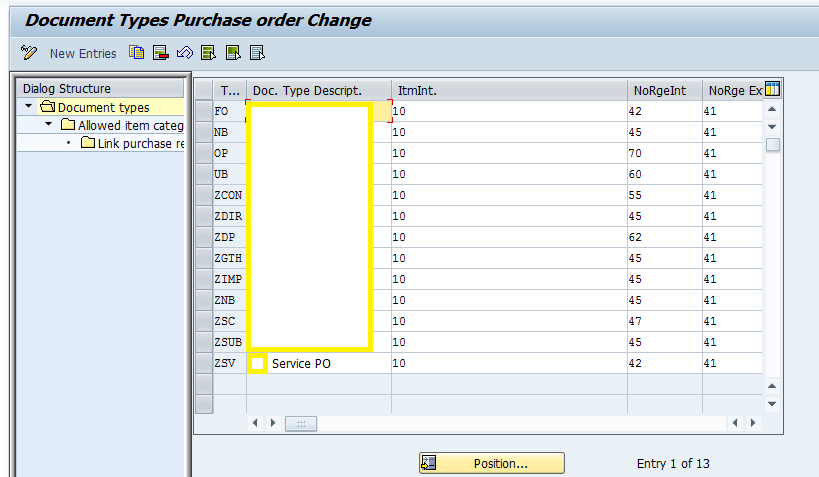

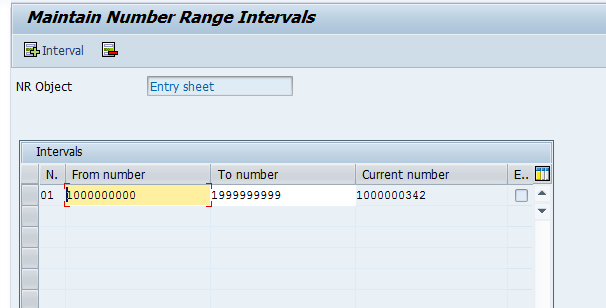
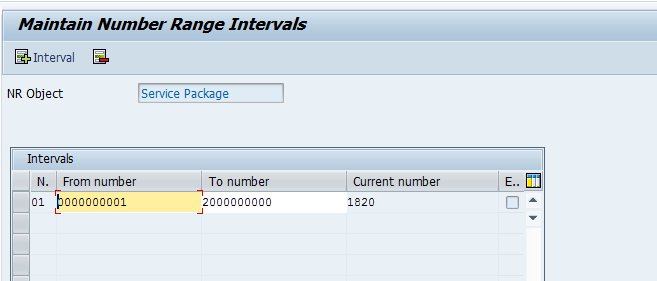

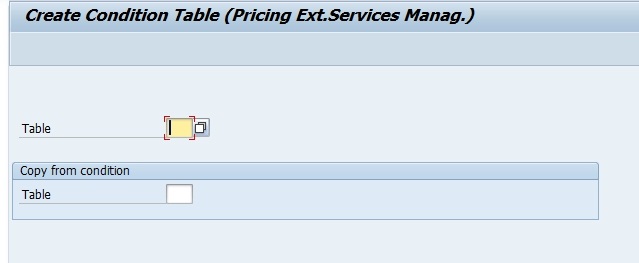
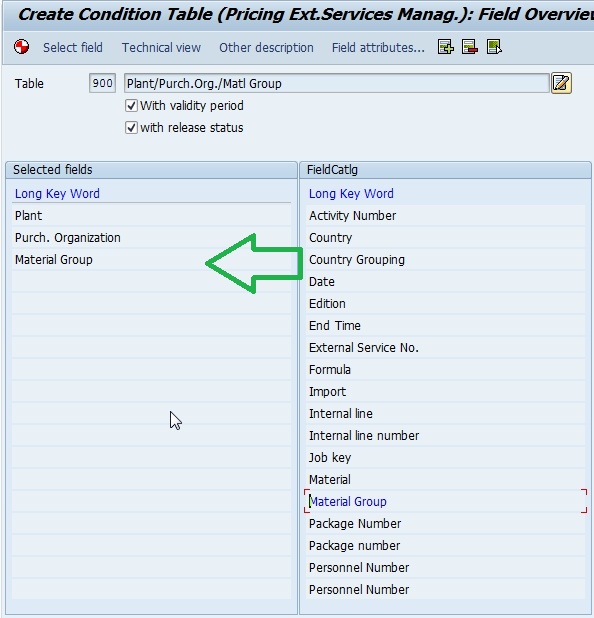
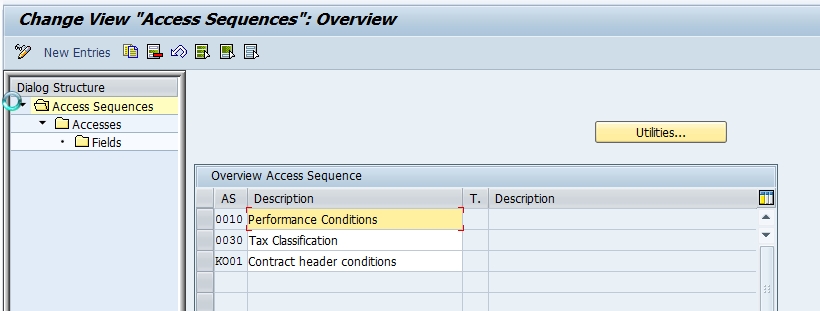

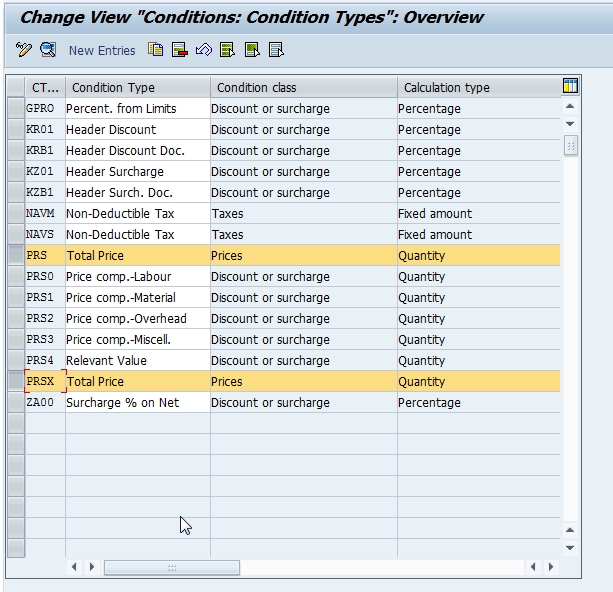
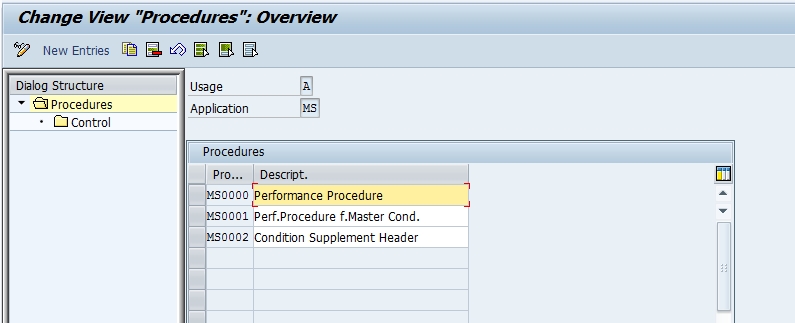
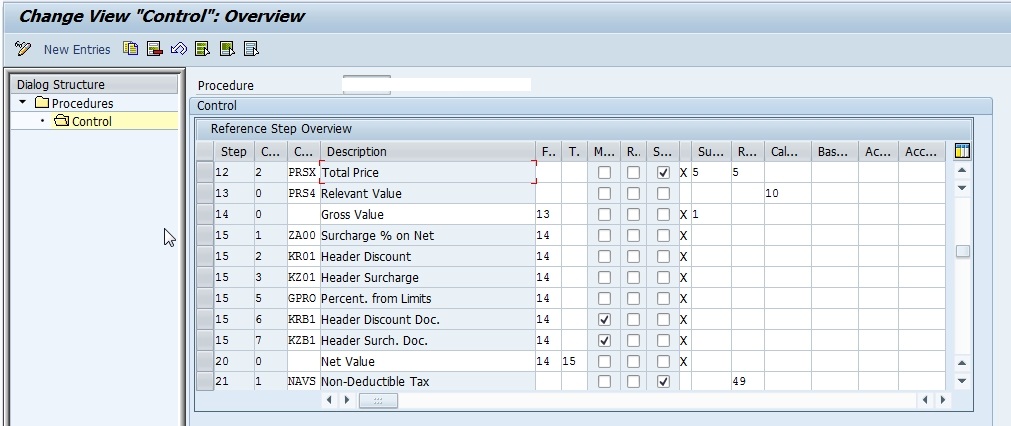
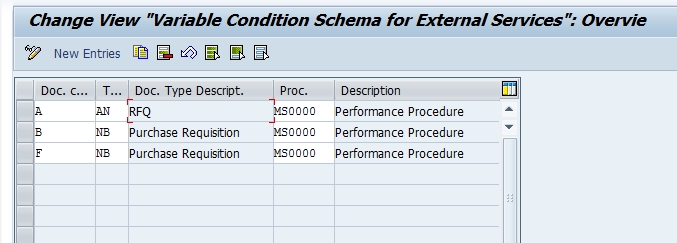
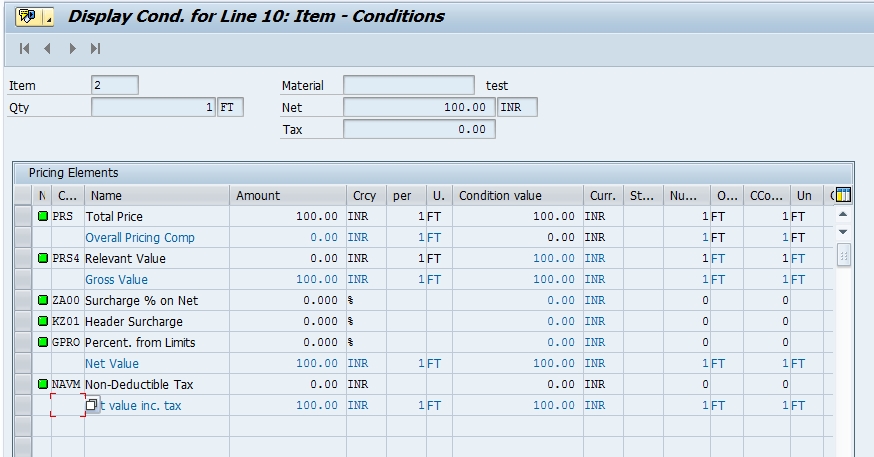
Leave A Comment?
You must be logged in to post a comment.